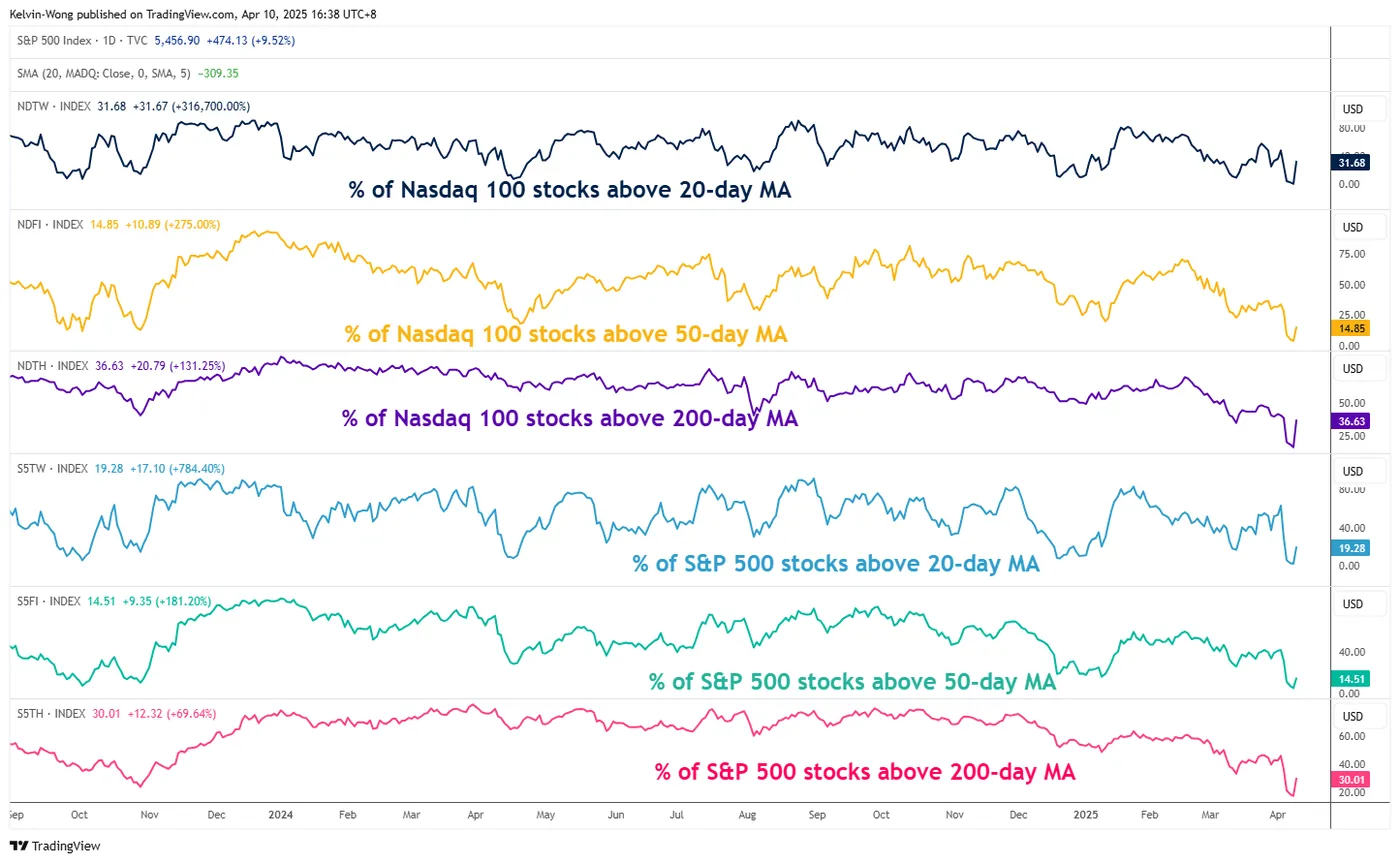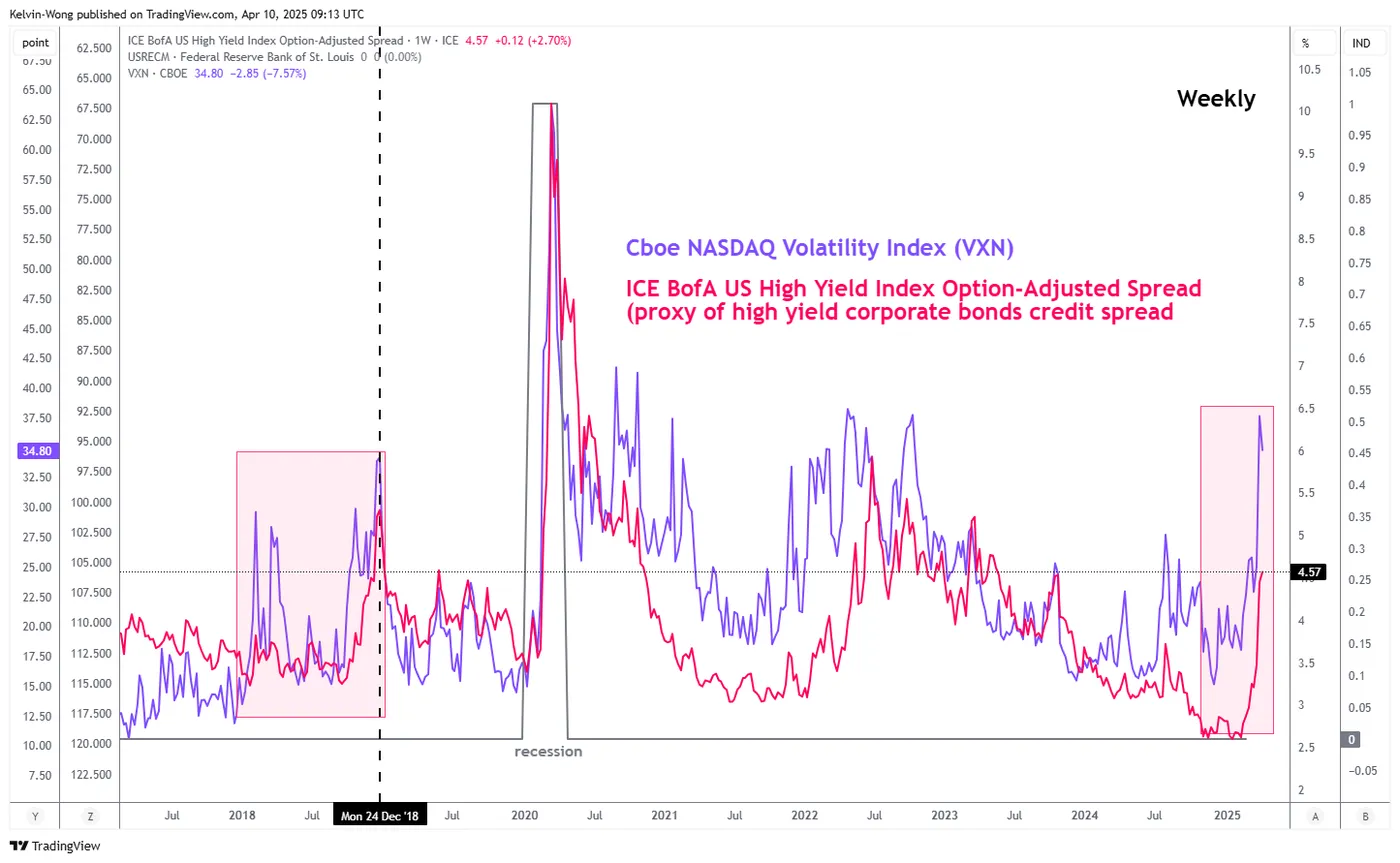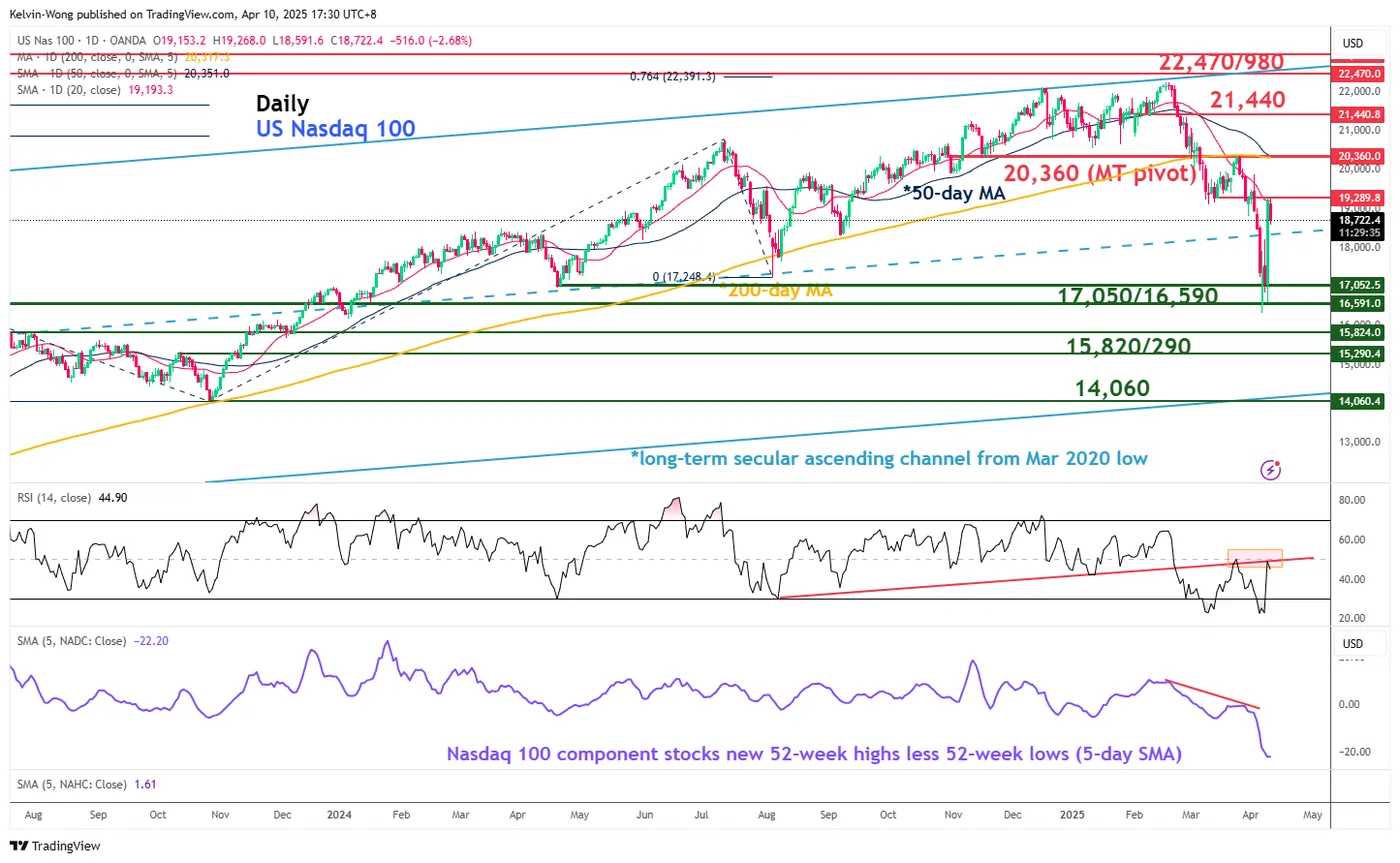- Market breadth measured by the percentage of Nasdaq 100 component stocks above their 20-day and 50-day moving averages remains lacklustre.
- An elevated widening trend of US high-yield corporate bonds credit spread may trigger another jump in the implied volatility of the Nasdaq 100.
- Key intermediate resistance stands at 19,290 on the Nasdaq 100.
This is a follow-up analysis of our prior analysis “Nasdaq 100 Technical Outlook: Bearish move materialised; how low can it go?” dated 1 April 2025.
Since our last publication, the Nasdaq 100 CFD Index (a proxy for the Nasdaq 100 E-mini futures) has tumbled 16%, breaking below the 17,300/17,250 medium-term support zone highlighted in our report. It went on to test the major support level at 16,590, printing an intraday low of 16,335 on 7 April before recovering to close higher at 17,508 by the end of the U.S. trading session.
In a dramatic move on Wednesday, April 8, U.S. President Trump announced a 90-day suspension of the increased reciprocal tariff rates for countries that choose not to retaliate, excluding China from this exemption.
Tensions between the U.S. and China remained high, as the White House imposed additional tariffs on Chinese goods, raising the tariff rate to 125% in response to Beijing's retaliatory measures of imposing 84% duties on all US imports.
The U.S. stock market skyrocketed, posting significant gains across major indices. Mega-cap-focused benchmarks, the S&P 500 and Nasdaq 100, surged by 9.5% and 12%, respectively. The Dow Jones Industrial Average and the small-cap Russell 2000 also rallied, climbing 7.9% and 8.7%, respectively, as investor optimism fueled a broad-based market upswing.
Yesterday's massive rally in the Nasdaq 100 marked its largest single-day gain since 2001 and the second biggest on record, trailing only the 19% surge recorded on 3 January 2001.
The key question on most traders' minds now is whether yesterday’s stellar performance signals the start of a medium-term bullish reversal in the Nasdaq 100 or if it’s merely a corrective rebound, commonly referred to as a “dead cat bounce.”
Market Breadth Indicators Remain Weak
Fig 1: Percentage of Nasdaq 100 & 500 component stocks above key moving averages as of 9 Apr 2025 (Source: TradingView)
As of Wednesday, April 9, only 32% and 15% of Nasdaq 100 component stocks were trading above their respective 20-day and 50-day moving averages—both remaining below the 50% threshold (see Fig 1).
This lacklustre market breadth suggests that the Nasdaq 100’s impressive single-day rally may not necessarily signal the start of a medium-term bullish reversal.
Implied Volatility May See a Jump Again
Fig 2: ICE BofA US High Yield Index Option-Adjusted Spread with VXN as of 9 Apr 2025 (Source: TradingView)
20-Day Moving Average Is Acting as An Immediate Ceiling at 19,290
Fig 3: Nasdaq 100 CFD major & medium-term trends as of 10 Apr 2025 (Source: TradingView)
After yesterday’s steep rally on the Nasdaq 100, the CFD Index has started to stall the bullish tone at its 20-day moving average, acting as a key intermediate resistance at 19,290, where an intraday bearish reaction of -2.8% has materialised at this time of writing (see Fig 3).
In addition, the daily RSI momentum indicator has also failed to break above a parallel resistance at the 50 level after it exited from an extreme oversold condition yesterday.
These observations suggest that yesterday’s 12% rebound on the Nasdaq 100 CFD Index may be a bull trap, and the medium-term downtrend phase is still intact.
A break with a daily close below 16,590 may trigger a fresh impulsive down move to expose the next medium-term supports at 15,820/15,290, and 14,060.
On the other hand, a clearance above 20,360 key medium-term pivotal resistance (also the intersection of the 50-day and 200-day moving averages) invalidates the bearish scenario for the next medium-term resistances to come in at 21,440, and 22,470/22,980 next.
